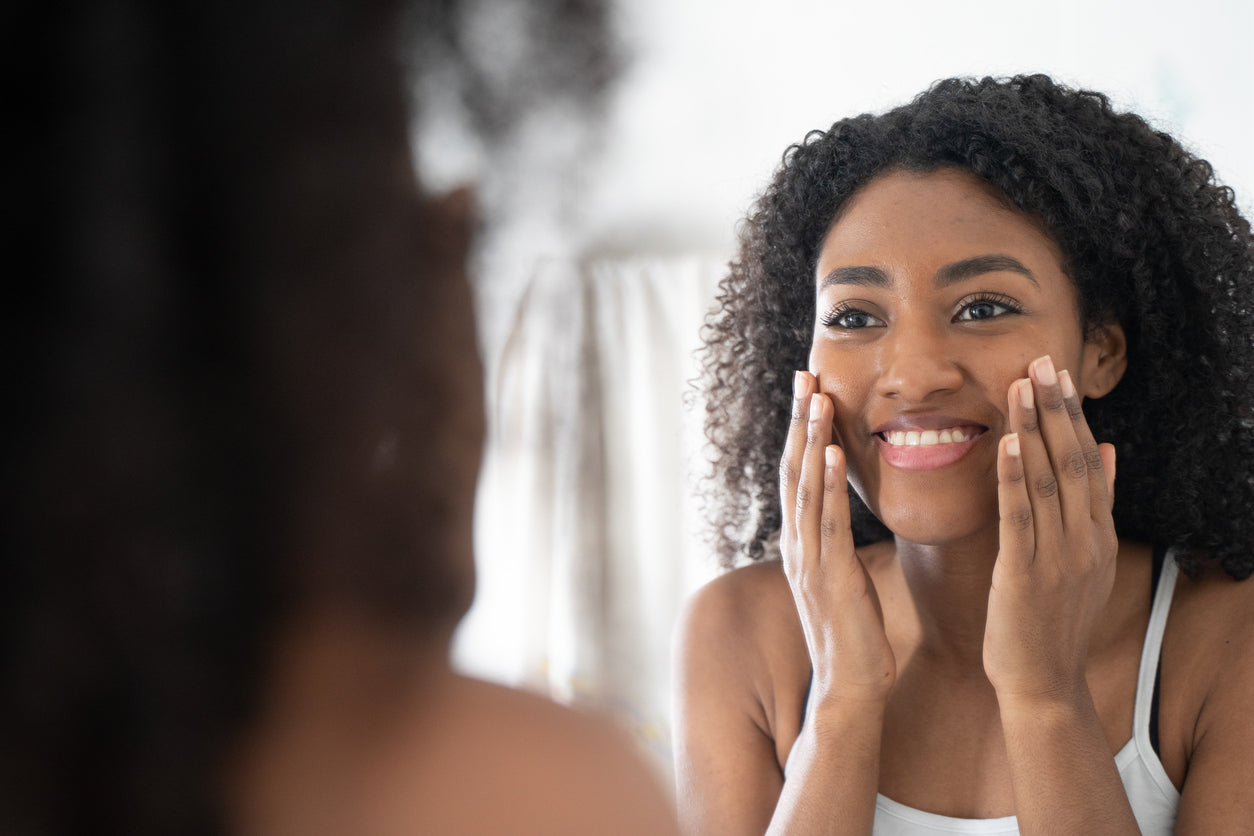There are many myths and facts surrounding retinol or retinoids. Retinoids is an umbrella term used for retinol products. They’re powerful and used to improve the skin’s texture, tone, and pigmentation. You can find retinol serums and creams in most skincare aisles.
The transformative effects of retinol are due to the very potent formulas which have caused them to garner many differing opinions, not to mention many questions. When should retinoids be used? When should we avoid them? How do they work? Can they be used on sensitive skin? We’re here to provide some much-needed clarity. There’s enough false info floating around about retinoids, and we’ve done some digging to clear the air, so you don’t have to.
All Retinoids Do The Same Thing
Oddly enough, the answer is yes and no. Prescription formulas contain retinoic acid, the ingredient that fights visible signs of aging. Non-prescription alternatives must be converted into retinoic acid by our skin at a cellular level. The non-prescription formulas contain retinol that’s only a derivative of vitamin A.
Retinoids Exfoliate The Skin
A common misconception is that retinoids work by exfoliating our skin. When there is peeling and redness, it’s a side effect of irritation, not exfoliation. Retinoids work by causing enhanced collagen production, affecting gene expression, smoothing the skin, and evening pigmentation.
Don’t Wear Retinoids In The Daytime
One of the biggest myths about retinoids is that you shouldn’t wear them in the daytime because they increase the risk of sunburn. Retinoids indeed break down in the sunlight, which is precisely why they’re bottled in opaque packaging, and they’re still best worn at night. Wearing retinoids at night ensures that they aren’t rendered inactive. However, the point here is that they don’t cause our skin to be more prone to sunburn. Some people experience redness when wearing retinoids in the daytime is likely due to heat exposure.
Always Apply Retinoids On Dry Skin
We know the instructions on the packaging recommend waiting until our face is completely dry before applying retinoids. However, no scientific evidence shows anything about damp or wet skin exacerbating sensitivity. Also, applying retinoids to damp skin doesn’t maximize its potency either.
You Have To Wait 4 to 6 Weeks For Retinoids To Work
Well, the sad truth is that it takes double and even triple that amount of time for retinoids to work their magic. It takes about 12 weeks for the retinoic acid to produce any noticeable changes in our skin. So, if you’re hoping for results, you’ll need to give it time, and you’ll have to have patience.
Gentle Retinoids Are Just As Effective As Strong Ones
The term “sensitive skin” we see on labels is typically code words for a lower concentration of the active ingredients. Many dermatologists still recommend using the lower concentrations because they make them a perfect gateway retinoid. Once a person with sensitive skin has tolerated a tube over several weeks, they can then move up to more potent retinol because the skin cells have better adapted so they can handle it.
Stop Applying Retinoid If Your Skin Becomes Irritated
Well, we have to push through the irritation. Irritation that flares up after including vitamin A into our regime is merely a part of the process. After two or three weeks of use, our skin cells will adapt to the retinoic acid, and then it starts to tolerate it. If, by chance, you’re experiencing prolonged discomfort or are very uncomfortable, limit the use to one time a week or switch to a weaker formula.
As time goes on, more myths and facts will turn up. You might hear that you shouldn’t put retinoids around the eyes; that’s false, DO IT! That’s where most of the damage is. Always flush out the myths with the facts!





